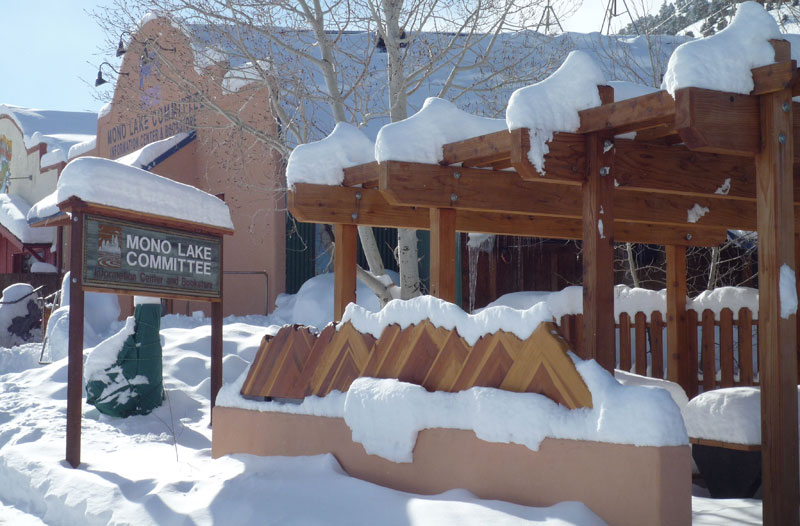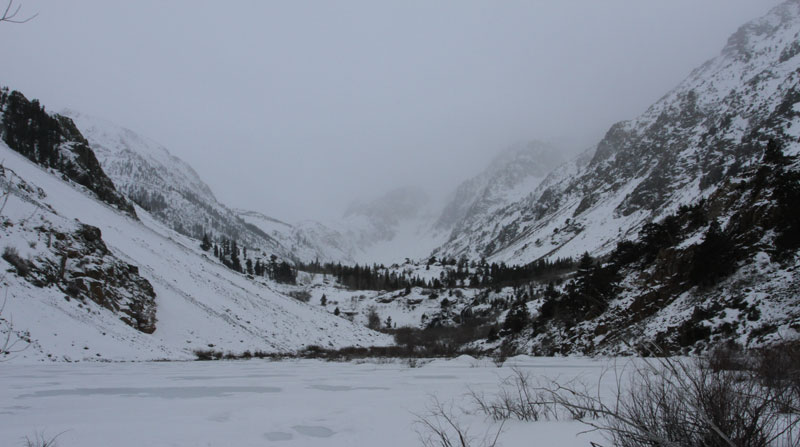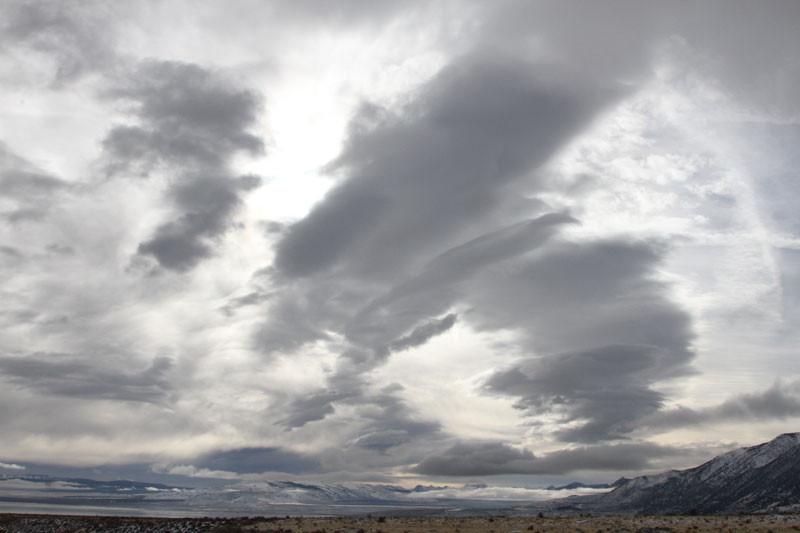
After an average fall, precipitation-wise, we recorded double the average December precipitation in Lee Vining. Between October 1st and the end of December, we have measured more snow (34.5″) and precipitation (6.5″) than during all of last winter! This represents about 50% of the average annual total.

For years with similar wet Decembers (1992, 1996, 2002, 2005, 2010), the following runoff year had close-to-average or above-average runoff. With a dry January so far (also occurring in about half of those years), we certainly aren’t out of the woods yet, but avoiding another dry year looks promising. A mid-winter dry period is typical for California’s climate, and when it follows abundant snowfall, it allows for weeks of poconip fog, keeping Lee Vining’s daytime high temperatures among the lowest in the state. But hopefully the storms will return by the end of the month.

Mono Lake is at 6382 feet above sea level, about the same level it was two years ago prior to a wet 2011 and a dry 2012. A wetter-than-average year this year would allow it to regain lost ground. Let’s hope for snow….

